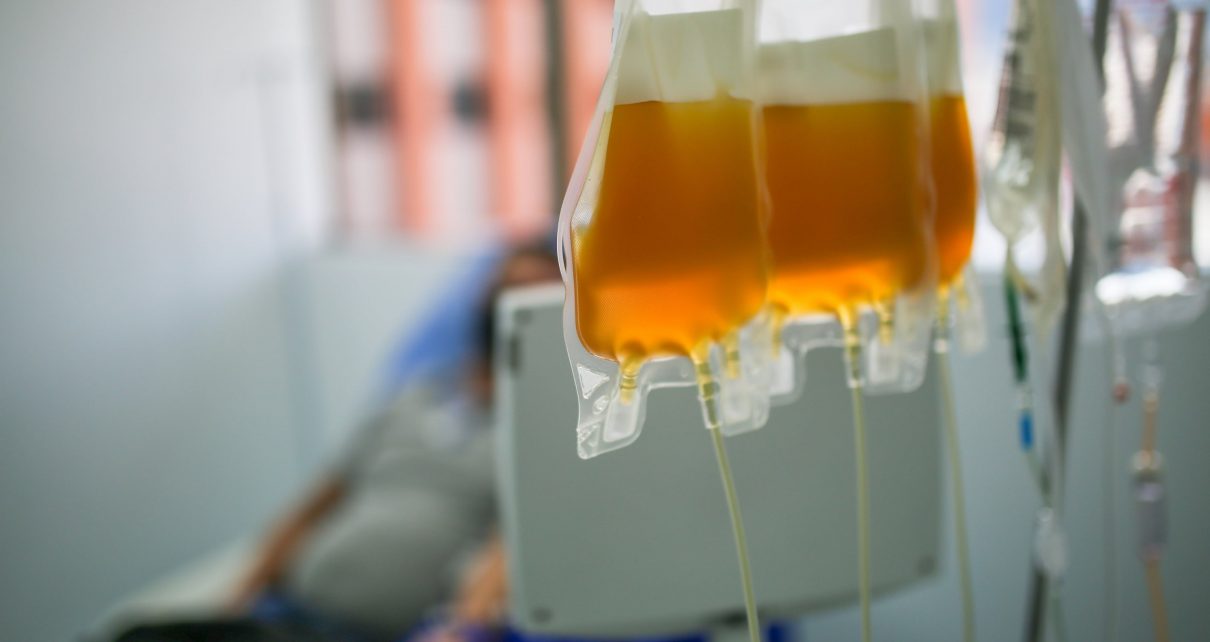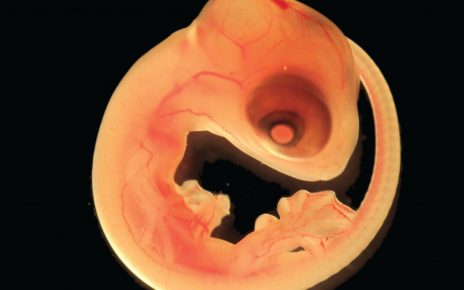On Sunday afternoon, August 24, President Trump announced an emergency use authorization (EUA) for what he described as a “powerful therapy” against COVID-19. Known as convalescent plasma, or CP, it’s donated by survivors of the disease, on the theory that the antibodies it carries can protect others from COVID’s worst ravages. And a few weeks ago, the Mayo Clinic released a preliminary report saying CP showed promise in doing just that—but nevertheless, the New York Times reported that the FDA was not ready to approve the treatment, even on an emergency basis.
Now the president has forced the agency to reverse itself—and to make things even more confusing, FDA Commissioner Stephen Hahn described the efficacy of the treatment incorrectly. So what’s going on?
To be clear, we are not particularly supportive of EUAs, since they may give the public an urealistically rosy impression of how promising a treatment actually is—something critics have brought up in this case as well. Another problem is that once an EUA has been issued, it can be harder to recruit subjects for a case control clinical trial, in which some subjects get a placebo and others get the actual treatment being studied. In particular, we would never support overriding the judgement of FDA professionals. As one of us (Michael Kinch) has consistently argued, the FDA must be guided by the independent and patient-focused approach exemplified by Frances Oldham Kelsey, who in the 1960s refused to approve thalidomide for distribution in the United States out of concern for patient safety.
Although we share concerns about the means by which the EUA was enacted, however, and about the optics that clearly suggest that the decision was tainted by political considerations, an overly-strident reaction risks throwing out the baby with the bathwater. In this spirit, we believe it is important to convey the rather remarkable story of how convalescent plasma arose for the treatment of COVID-19.
To begin with, the Mayo Clinic study isn’t the only one that has shown promise. Other researchers have generated rigorous, peer-reviewed outcomes from smaller trials—either randomized controlled trials that did not fully enroll, or case control studies, such as those from Mount Sinai and Houston Methodist Hospital. In each case, these results showed consistent and encouraging results although they admittedly were not fully-enrolled and randomized controlled trials (RCTs).
Over the last several months, a loose-knit group of physicians and academics, often funding and performing work themselves, have been exploring the potential of convalescent plasma. The idea is hardly novel. First developed in the 1890s by Nobel Prize–winning German physiologist Emil Behring, convalescent plasma is collected from the blood of patients who have recovered from a disease. Antibodies in that plasma can help treat current patients. Over the last century, this type of therapy has saved countless lives.
In early February, as COVID-19 ravaged Wuhan, Arturo Casadevall at Johns Hopkins University floated the idea of using convalescent plasma to treat the coronavirus. He did so on an informal LISTSERV—essentially an e-mail-based watercooler conversation—of physician-scientists and public health specialists. Momentum began to build. Michael Joyner of the Mayo Clinic started assembling a small response team. New needs were identified, friends joined the effort, and subgroups began to form.
Champions such as our colleague Brenda Grossman emerged to tackle critical challenges: the preparation and distribution of convalescent plasma, the complexities of blood banking and storage. Volunteers raced to establish efficacy through RCTs. (Historically, such trials were nearly nonexistent, since convalescent plasma was often pursued as a desperation measure, in the face of urgent need.)
Last spring, one of us (Jeffrey Henderson) reached out to the head infectious diseases researcher at Walter Reed; the U.S. Navy’s top infectious disease physician; and the head of the U.S. Army’s COVID-19 task force. All three officials listened intently, acutely aware that the pandemic was now engulfing Italy and menacing American military bases there. They recognized that the pandemic could impact military readiness and that infected warfighters might further serve their country by donating plasma (the DoD has its own internal blood collection service). They agreed to elevate the prospects for convalescent plasma within their commands.
The listserv volunteers continued their work, soon organizing into the National COVID-19 Convalescent Plasma Project. On a March afternoon, members raced down I-95, from Baltimore to FDA headquarters outside Washington, to file paperwork for an investigational new drug application. The FDA’s response, released March 24, was more permissive than expected: it moved straight to compassionate use authorization. Convalescent plasma could be given to the sickest patients in RCTs, as long as treating physicians agreed to provide post-transfusion safety data.
To facilitate convalescent plasma collection and evaluation, project members developed a dedicated communications network. Problems were solved on the fly; members joked about building an airplane while the craft was aloft. Academic institutions, in accordance with FDA guidelines, began referring volunteers for plasma donation. With assistance from Brenda Grossman and volunteer Chaim Lebovits, supply began to build in blood banks like the American Red Cross. Philanthropic donors funded trials.
But the unexpected FDA authorization presented a potential problem. Some worried that patients and physicians desperate to request compassionate use might hesitate to participate in randomized trials, where they may end up in a control group that does not receive CP, foreshadowing the controversies of today. Similarly, the much-needed adoption of social distancing measures in hospitals complicated the consent process necessary for trial enrollment. These actions served to diminish the intended RCT design of the trials. Such issues would later fuel criticism and were a factor in the FDA delaying emergency use authorization.
Nevertheless, the largest compassionate use trial, shepherded by Joyner and the Mayo Clinic, continued to grow and soon encompassed more than 60,000 patients. Meanwhile, another LISTSERV leader, Liise-anne Pirofski at the Albert Einstein College of Medicine, began a randomized clinical trial. Other small (and thus unfortunately statistically underpowered) studies emerged from the Netherlands and China, the latter of which was halted with only about half of the patients enrolled.
On August 12, the Mayo Clinic released findings based on a robust population of more than 35,000 patients, most of whom were hospitalized and very sick (requiring intensive care). Importantly, this study found, among other things, that treating patients with convalescent plasma results in a 27 percent improvement in seven-day survival—making this century-old method at least as useful as remdesivir, an experimental medicine that quickly became a household name a few months ago.
The August 12 study also revealed several important caveats to our larger COVID-19 response. For example, it demonstrated that when treatment is administered within three days of diagnosis, mortality rates were substantially lower. This was not unexpected, and mirrors the need for early intervention to succeed in combatting influenza, another infectious and deadly respiratory pathogen.
Intervention within three days has proven to be entirely feasible, especially as the turnaround time for diagnostics has improved since the time the CP study began. Moreover, the conversion of the compassionate use trial to an EUA should increase the availability of CP and thus shorten time to treatment. Indeed, the impressive strength of the American blood banking system allows the nation to move CP units around in an efficient way. By informing providers of the usefulness of the therapy, as well as its limitations, physicians should also be able to deploy CS more optimally and to those patients most likely to benefit. Yet these results also reinforce the importance of early testing and intervention—proposals that still generate considerable public debate.
Largely undiscussed is the relationship between the concentration of antibodies that recognize SARS-CoV-2 and how well patients respond to CP therapy. In the Mayo study, researchers hypothesized that patients who received plasma with higher antibody concentrations would fare better than those who received plasma with lower concentrations. Because physicians and patients had no prior knowledge of antibody concentrations at the time of treatment, this was effectively a randomized, blinded study with low-titer plasma serving as controls. Long after treatment, researchers unblinded this de facto randomized controlled study by measuring antibody content and comparing patient outcomes.
Among patients treated early, they found that mortality in those who received plasma with high SARS-CoV-2 antibodies decreased by more than a third compared to those who received plasma low antibodies. In those treated late, mortality between groups was comparable. This dose-dependence result was largely overlooked by the critics and would seem to further strengthen the argument for convalescent plasma in COVID-19.
The dose-dependent outcome is crucial in light of evidence that the antibody levels in infected patients tend to drop rapidly over time. Such outcomes may suggest an opportunity to pool and concentrate the antibody levels in plasma, interventions that are readily addressed by current technologies.
What initially set this study and the overall convalescent plasma project apart is that both were largely free from the hype and spin surrounding other investigational COVID-19 treatments. At least this was the case before Sunday’s surprise announcement; and the fact it occurred a day before the start of a political convention served merely to enrage political opponents. We have already seen too many drugs and vaccines loudly touted by politicians or companies seeking to profit from their notoriety. In contrast, the nation’s academic and medical organizations, in concert with patients and primary physicians, have quietly pursued lifesaving medicine—and developed a powerful new tool—through an ethic of cooperation and transparency.
In the press conference where the policy reversal was announced, FDA Commissioner Stephen Hahn mistakenly claimed that, for example, an overall 35 percent efficacy meant that 35 of 100 people would be saved by the new treatment. This is inaccurate. The 35 percent is a relative measurement, meaning that subjects were over a third more likely to benefit from treatment than were control subjects in earlier experiments.
Despite the commotion, the EUA is largely a continuation of the status quo for CP, albeit with a relieved paperwork burden on medical providers and hospitals that use it, effectively expanding its availability to marginalized communities. Notably, the EUA does not preclude future RCTs on plasma, and indeed, in issuing its authorization, the FDA stressed an intention that RCTs continue unabated
Going forward, it will be important for private and public sectors to join forces. We must assesss whether or how responses to convalescent plasma vary in patients with different degrees of disese severity and demographic diversity. To do so, we must increase scale and facilitate early use of convalescent plasma treatments. We must support the large-scale studies now underway, including RCTs, the results of which may become available within weeks. We must resist baseless conspiracy theories that government scientists are holding back work. We must avoid unscientific approaches such as “right to try,” which can undermine objective clinical trials. We must complete randomized controlled trials to ensure that this therapy is both safe and efficacious. Most importantly, we must allow the professionals in the FDA to make data-based, scientifically sound decisions, unbiased by political pressure.
The National Center for Advancing Translational Sciences (NCATS) is funding the expansion of two randomized placebo controlled trials of convalescent plasma in hospitalized patients led by the NYU Langone and Montefiore/Einstein health systems (CONTAIN COVID-19) and Vanderbilt Medical Center (PassItOn). This development provides much-needed good news for nervous physicians and for a public dreading what promises to be a brutal cold and flu season.
We still have much to do, as winter approaches, and we still have much to learn. But thanks in part to a humble listserv, we can approach the coming months with considerably more hope.



